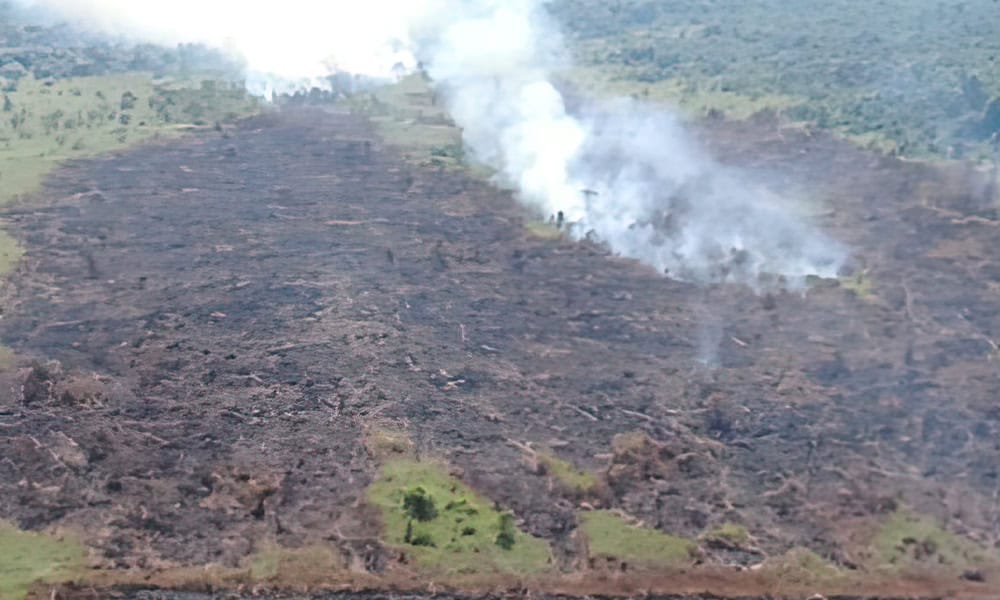Since last Sunday, forest fire departments of the Arenal Huetar Norte Conservation Area have been dealing with a forest fire in the sector of Amparo in Caño Negro de los Chiles, within the Caño Negro National Mixed Wildlife Refuge. Unfortunately, it has expanded, affecting the State’s Natural Heritage land and the ecosystems present in the site.
This emergency is currently declared as level 2 in terms of damage and is active. According to experts, to date, 110 hectares have been affected. Fifteen members of the fire department have responded to the emergency and are carrying out control and extinguishing tasks to contain the advance of the fire.
“Forest fires in our country are classified as an emergency and require immediate attention due to the multiple impacts and effects they entail. Therefore, SINAC has instructed all personnel in the regional offices, subregions, and protected wildlife areas on the application of the Permanent Alert to prevent and combat forest fires on State Natural Heritage lands,” said Franz Tattenbach, Minister of Environment and Energy.
According to data from the National Fire Management Program of SINAC-MINAE, 98% of forest fires in the country are caused by man’s hand, due to circumstances such as vandalism, carelessness, pollution, among others, so the institution calls on the population to be aware and not to perform actions that may cause fire.
Mariana Jimenez, Regional Director of the Arenal Conservation Area, praised the work carried out by the firefighters. “The work being done by forest firefighters and volunteers is fundamental to reduce the number of hectares affected. We have worked tirelessly to extinguish the fire in this protected wildlife area, which is of great importance for our country,” she said.
The refuge was declared a RAMSAR Site on December 27, 1991. In its lagoons lives the Gaspar fish, a freshwater species that has a body covered with huge strong scales and an elongated snout-shaped mouth armed with a large number of fine teeth. Said species is of great interest for scientists.
Since 2007 it has been part of the Agua y Paz Biosphere Reserve and the Ruta Los Malecus Biological Corridor. Some of its lagoons are considered sacred sites of the Malecu indigenous culture. The area functions as a flood controller, as it is the overflow site of the Frio River.
There are diverse aquatic environments such as slow-moving rivers, streams, swampy areas, seasonally flooded grasslands, savannas, palm groves, swampy forests, and temporarily flooded forests.






